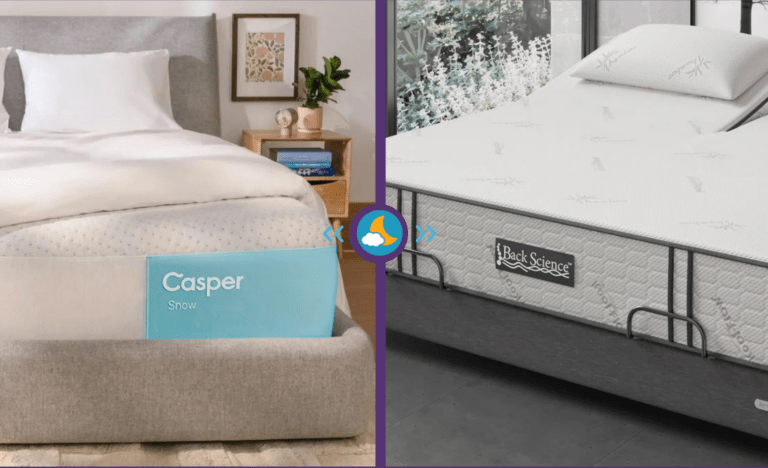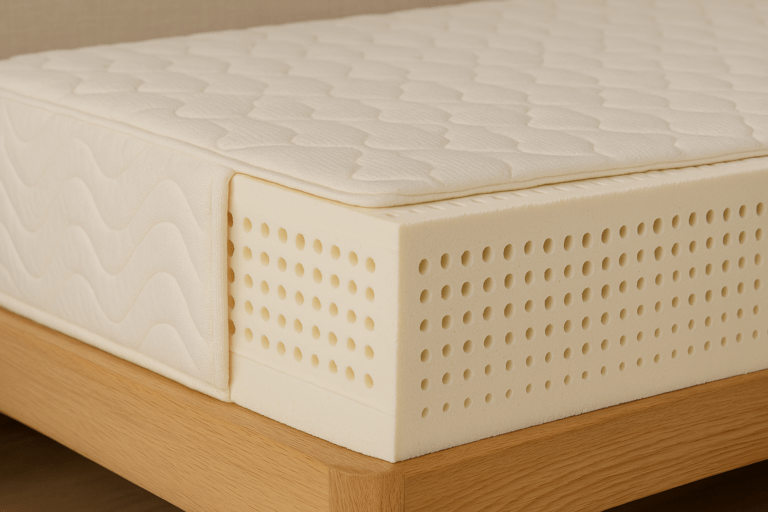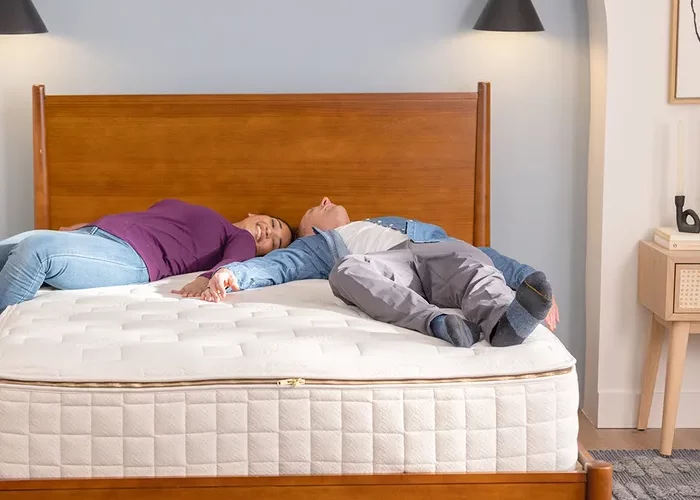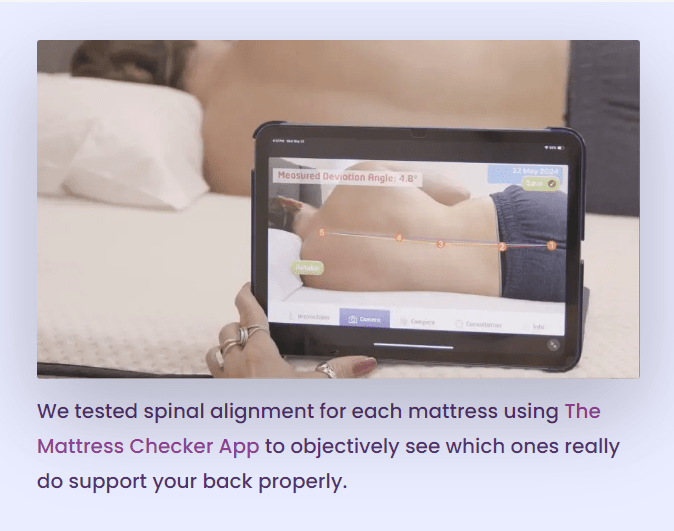
How to Find The Right Mattress Support for Pain Relief
Mattress shopping stress can quickly turn from exciting to exhausting. Beyond the paid ads, paid influencers, and endless reviews, finding a bed that truly supports your body, especially if you deal with back pain, isn’t always straightforward. We recently came across a great example of this on Mattress Underground, where one shopper shared their experience after spending thousands on a bed that left them in pain. Their journey highlights an important takeaway: for many sleepers, firm, simple support often delivers better long-term comfort than high-tech features.
Mattress Underground Thread Highlights Common Mattress Pitfalls
If mattress shopping has you feeling overwhelmed, you’re not alone.
We recently came across this post on Mattress Underground, and it captured exactly what so many people experience when trying to find the right bed:
“I literally can’t walk when I wake up in the morning… I feel like I need to use muscle just to turn over.”
This user, Lindsay, was sleeping on a $10K Sleep Number M7, yet ended up moving to a stool because of the pain it caused. Sound familiar?
After better sleep on firmer hotel beds during vacation, they began searching for a new mattress, only to run into the same headaches so many of us do: conflicting info in stores, online models unavailable locally, confusing brand claims, and sales floors that don’t match what you see online.
At Sleep Examiner, we’ve been seeing this pattern often. People want a mattress that works for their body, not one that sounds good in a showroom or ad. That’s why we’ve been impressed by the Back Science Series 2 Mattress’s no-nonsense support and why it caught our eye that several forum members have praised this brand and its founder, Dr. Rick Swartzburg.
Here’s a closer look at the situation and why Back Science resonates with so many.
The Struggle: When Luxury Labels Don’t Equal Support
Lindsay did everything right—researching, testing beds in-store, and even investing in a high-priced mattress. Yet the result was anything but restful.
Inside their Sleep Number bed? Two cheap air bladders and a thin piece of foam. No wonder they woke up stiff and sore.
When they ruled out memory foam (feeling “stuck” and unable to move freely), they moved on to firmer coil-based options: Aireloom and Stearns & Foster. Unfortunately, this led to more frustration:
- Aireloom in-store models didn’t match those online.
- The best Aireloom models weren’t available in their state.
- Many Stearns & Foster beds felt great at first, but online reviews repeatedly flagged early sagging issues.
In the forum replies, one expert also suggested that certain advanced air beds, like The Rejuvanate by Personal Comfort or Sleep Number, can offer more precise adjustments and improved edge-to-edge support compared to older models. For some sleepers, these can be a good solution. But in Lindsay’s case, after trying an air-based system and waking up in pain, they were leaning away from air and memory foam designs altogether, seeking the feel of a simpler, firmer, coil-supported surface instead.
This is where options like the Back Science Series 2 come into play, offering true back support without the complexity or maintenance of air systems.
Quick Look: Aireloom & Stearns & Foster
These two brands offer beautiful construction and initial comfort, but both come with trade-offs:
Aireloom
- Handmade hybrids with a distinct “loft” feel.
- High-end materials (Talalay latex, pocket coils, wool, cashmere).
- Mixed durability feedback — some report sagging within a year.
- Strict return/warranty requirements (returns only if sag exceeds 1.5 inches).
Stearns & Foster
- Legacy brand under Tempur-Sealy.
- Hybrid and innerspring models with premium foams/coils.
- Strong initial comfort but similar durability concerns, especially on pillow-tops.
- Trial periods vary. Returns often come with hefty restocking fees.
For active sleepers needing long-term back support, neither brand is a sure thing. And as Lindsay’s thread shows, navigating availability and product variations only adds stress.
Why We Recommend Considering Back Science
When we tested the Back Science Series 2 Mattress, it became clear why it’s building a loyal following among those dealing with chronic pain or simply wanting true spinal alignment:
✅ Firm, consistent support. No sink or stuck sensation
✅ No cheap air systems or low-density foams
✅ Designed by Dr. Rick Swartzburg. Long-time advocate for back-friendly mattress design
✅ Forum users specifically praise both the mattress and the personalized customer service
It’s refreshing to see a mattress brand that doesn’t rely on flashy marketing or endless “tech layers.” Instead, Back Science focuses on doing one thing well: building a bed that supports the natural curves of your spine and helps keep you aligned.
For those like Lindsay—active, healthy people who wake up sore on most mattresses—this makes all the difference.
Tips for a Less Stressful Mattress Search
If Lindsay’s story hits home, here are a few things we always recommend:
- Test thoughtfully. Spend at least 15–20 minutes on any bed in-store, in your preferred sleep position.
- Research materials. If you dislike the “stuck” feel of memory foam, look toward hybrids or firmer coil systems with latex or responsive foams.
- Dig into reviews. Sites like Mattress Underground and ours are full of real feedback on durability and comfort, not just marketing promises.
- Know return policies. Check for trial periods, restocking fees, and warranty fine print (especially sagging thresholds).
- Don’t get dazzled by labels. A high price tag or brand name does not guarantee better support or longer-lasting comfort.
Final Thoughts
Mattress shopping shouldn’t leave you exhausted.
While brands like Aireloom and Stearns & Foster have their place, they may not deliver the consistent, firm support many back pain sufferers need, especially for the price.
And while advanced air systems like The Rejuvinate or Sleep Number work well for some sleepers, they aren’t always the right solution for those who simply want a stable, supportive surface, especially after a disappointing air bed experience.
For sleepers like Lindsay, who crave firmness without memory foam and care about spinal alignment, the Back Science Series 2 Mattress is well worth considering.
And if you’re digging through forums like Mattress Underground, know this: you are not alone in the search. The right bed is out there—and you deserve one that helps you wake up ready to move, not hurting.
MORE SLEEP TIPS:
-
Sagittarius and the Cell Salt Silicea
Sleep Examiner Rating:
-
How to Hack Your Sleep: 12 Ways to Sleep Better
Sleep Examiner Rating:
-
Back Science Series 2 vs. Casper Snow Hybrid Mattress Comparison
Sleep Examiner Rating:
-
The Truth About Latex Mattresses
Sleep Examiner Rating:
-
Discover the Best 100% Latex-Free Mattresses
Sleep Examiner Rating:






